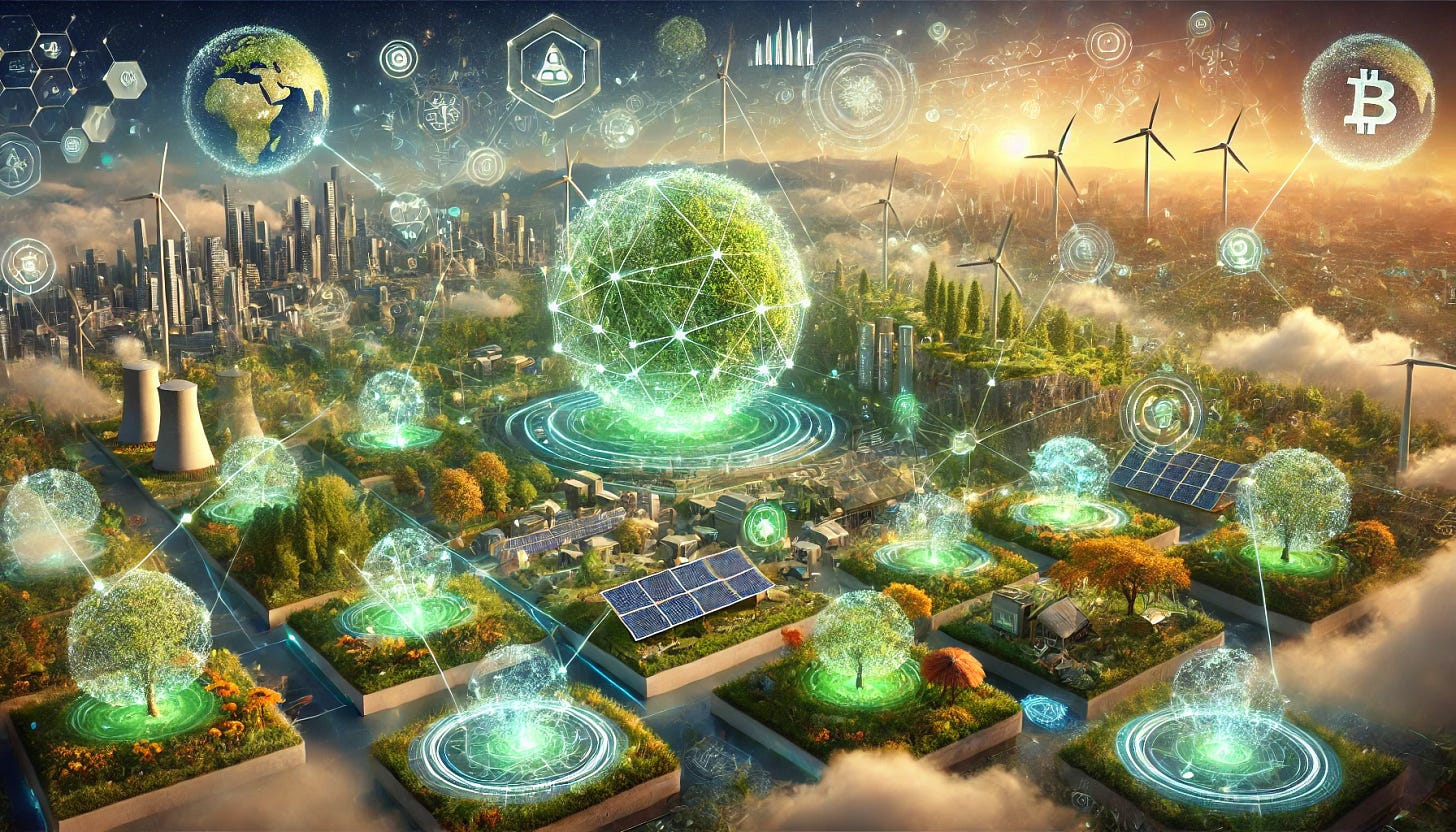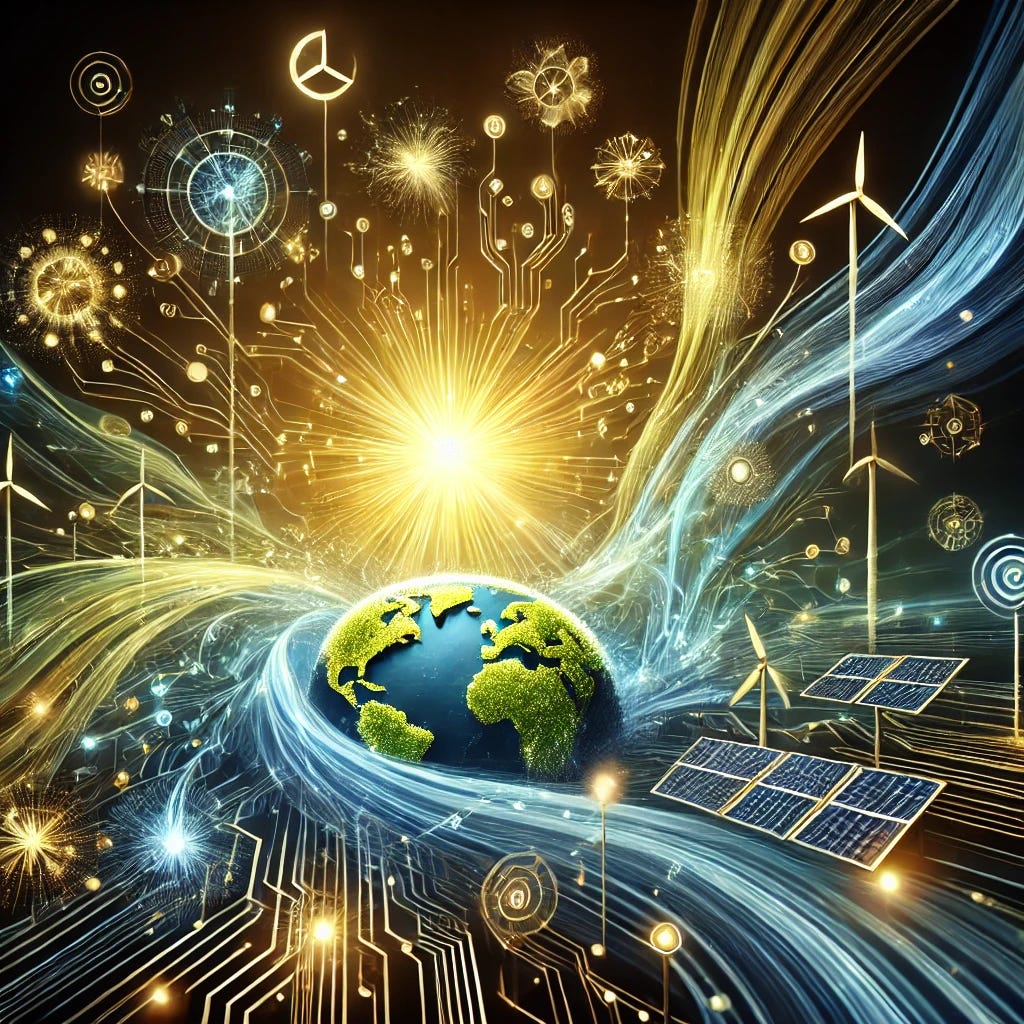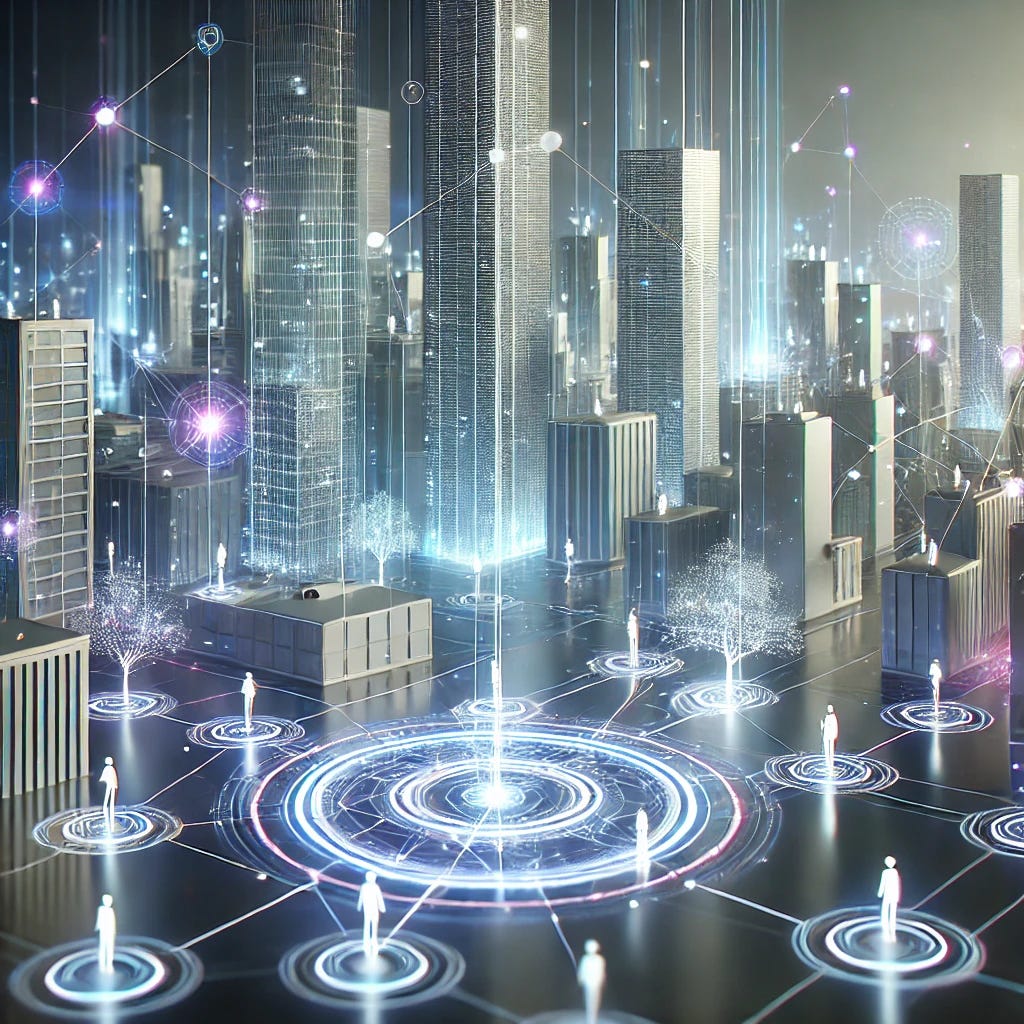Network States, DePIN and Sustainable Cities
Enter the world of metaphysical network states, and the practical landscape of decentralised physical infrastructure (DePIN) and how they could shape tomorrow's cities sooner than you think...
Cities are the beating hearts of global finance, government, and modern life. Yet despite all the innovations of our sprawling metropolises, many people find themselves feeling isolated and disconnected. We’ve traded community, shared spaces and connectivity for convinience and spacial efficiency.
Humans evolved in small, tightly knit communities, deeply connected to both nature and one another, each person with a purpose and a role in supporting those around them. We were each responsible for the safety and needs of our community, as well as creating a socially harmoneous environment to live in. Biologically, our needs for community and connection have not changed.
The mass disconnection between modern city life, our neighbours and the environmental systems we all rely on is at an unprecedented scale. With 56% of the worlds population living in Cities isn’t it time we created living spaces that served the people that live there?
While many city dwellers find their communities within their social circles, these groups often reflect the core of our ancestral living: small, connected communities with a shared sense of purpose. However even these come with a ‘cost’ and are generally fragmented geographically. I’m no stranger to the pub or bar outing, however, connecting with friends in a city almost always involves a paid event, outing or meal. The choices of community spaces, involvement or sustainable choices in all of these are small.
Now, recent technological advances in urban planning, sustainability, and governance are pushing us to rethink how we can reconnect these core virtues of human living with modern city life. Concepts like Network States, DePIN (Decentralized Physical Infrastructure Networks), and the transformative potential of Web3 offer a new framework for reimagining cities as hubs of connection, resilience, being financially equitable and environmental sustainability.
Together, these movements offer a framework for reducing energy inequality and reimagining cities to be more resilient, inclusive, and environmentally responsible.
DePIN as a Foundation for Sustainable Urban Infrastructure
DePIN is emerging as a powerful tool for creating decentralized infrastructure that can be owned, managed, and sustained by communities. DePIN combines physical assets—such as solar panels, wireless networks, or electric vehicle chargers—with blockchain networks, enabling new models of shared infrastructure that are resilient and efficient.
DePIN can be a tool to reduce energy inequality and create financially equitable functions for everyday behaviour as well as providing resilliance to future global gas supply chain disruption.
One example of this would be projects like Powerledger. Powerledger are now building decentralized grids for renewable energy, electric vehicle (EV) charging networks, peer to peer energy trading and real-time carbon-free energy alignment, transforming energy markets.
The result is a suite of infrastructure solutions that promote sustainability through efficient resource use and active community involvement. This approach fosters energy democratization, empowering individuals—particularly in emerging markets—to manage their energy consumption and production efficiently while reducing reliance on traditional power grids and intermediaries.
By embracing DePIN, cities can reduce their reliance on centralized service providers. This decentralization not only promotes resilience by preventing single points of failure but also allows residents to have a more direct role in managing resources. For example, Helium is a DePIN project that has created a decentralized wireless network, providing an alternative to traditional internet providers.
The Rise of Network States and Decentralized Infrastructure
While the term "Network State" is new, popularised by Balaji Srinivasan's book The Network State: How to Start a New Country, published in 2022. It’s underlying ideas have evolved over decades, influenced by technological advancements and the increasing fluidity of borders in the digital age. Put simply a network state is a group of people with aligned values and goals that come together to create semi-autonomous, digitally coordinated communities. Unlike traditional states defined by geographic borders, Network States leverage the power of Web3 technologies to operate across borders, anchored by shared ideals rather than physical land.
Network States offer a compelling model for decentralized governance. They empower communities to manage their own infrastructure, economy, and decision-making processes, often through the use of decentralized autonomous organizations (DAOs) and token-based voting systems. The concept empowers like-minded communities to pool resources, solve collective problems, and establish a sense of sovereignty without being tied to geographic borders.
By leveraging blockchain technology for transparency and coordination, these communities can create their own systems of governance, currencies, and economies, enabling them to thrive independently while collaborating globally. The result is a more flexible, scalable, and inclusive model of citizenship and statehood that aligns with the rapidly changing dynamics of our interconnected world.
Real-World Examples: Building Blocks for a Sustainable Future
Several projects and communities are already exploring these ideas, laying the groundwork for decentralized and sustainable cities:
Praxis Society is experimenting with network state principles, creating a digitally coordinated community that operates under a shared vision for a resilient and sustainable lifestyle.
V-Dao is also experimenting with a regenerative network state
Helium is an early example of DePIN, enabling decentralized wireless infrastructure managed by a network of individual contributors. By providing an alternative to traditional internet infrastructure, Helium has shown the potential for DePIN to create resilient, community-driven solutions.
Powerledger is a blockchain-based software platform for trading renewable energy and environmental commodities. It enables real-time tracking, tracing, and trading of energy, addressing grid challenges like intermittency and centralization. Designed to democratize energy markets, Powerledger creates a resilient and flexible power system for a sustainable future.
These examples showcase the versatility of Web3-powered models, whether applied to communication networks, energy, or even shared environmental monitoring systems. They demonstrate how DePIN and Network States can make cities more resilient, sustainable, and adaptable.
Overcoming Challenges on the Road to Decentralization
While the vision of Web3-powered cities is compelling, there are still hurdles to overcome. Regulatory uncertainty remains a key challenge, as decentralized models often conflict with established laws and infrastructure requirements. Additionally, creating community engagement at scale can be difficult—effective decentralized networks require a critical mass of participants who are invested in the system’s success.
Social challenges also come into play. Decentralized networks have the potential to both include and exclude, depending on how they are designed. To ensure equity, it’s essential to consider how these systems can be made accessible to all residents, especially communities that might not have the resources to participate fully in these models.
Why This Matters Now
With rapid urbanization, rising energy inequality and escalating environmental challenges, the need for sustainable and adaptive urban solutions has never been greater. We’ve seen dramatic tests of our interconnected global supply chains over the last 4 years - adaptive and resilient technologies that can sure up our infrastructure, give greater access for communities to be responsible for the spaces they live in and foster more sustainable living.
Network States, DePIN, and Web3 offer promising pathways for building the cities of the future. By decentralizing infrastructure, fostering community-driven governance, and creating incentive structures that promote sustainability, these technologies can transform our cities into ecosystems that are not only resilient but also aligned with core human values like community, connection and collective responsibility
As we explore these new models, it’s crucial to recognize that they represent a departure from traditional governance and infrastructure paradigms. But with the right vision, Network States, DePIN, and Web3 could pave the way for cities that are smarter, greener, and more inclusive—cities that truly reflect the communities they serve.








